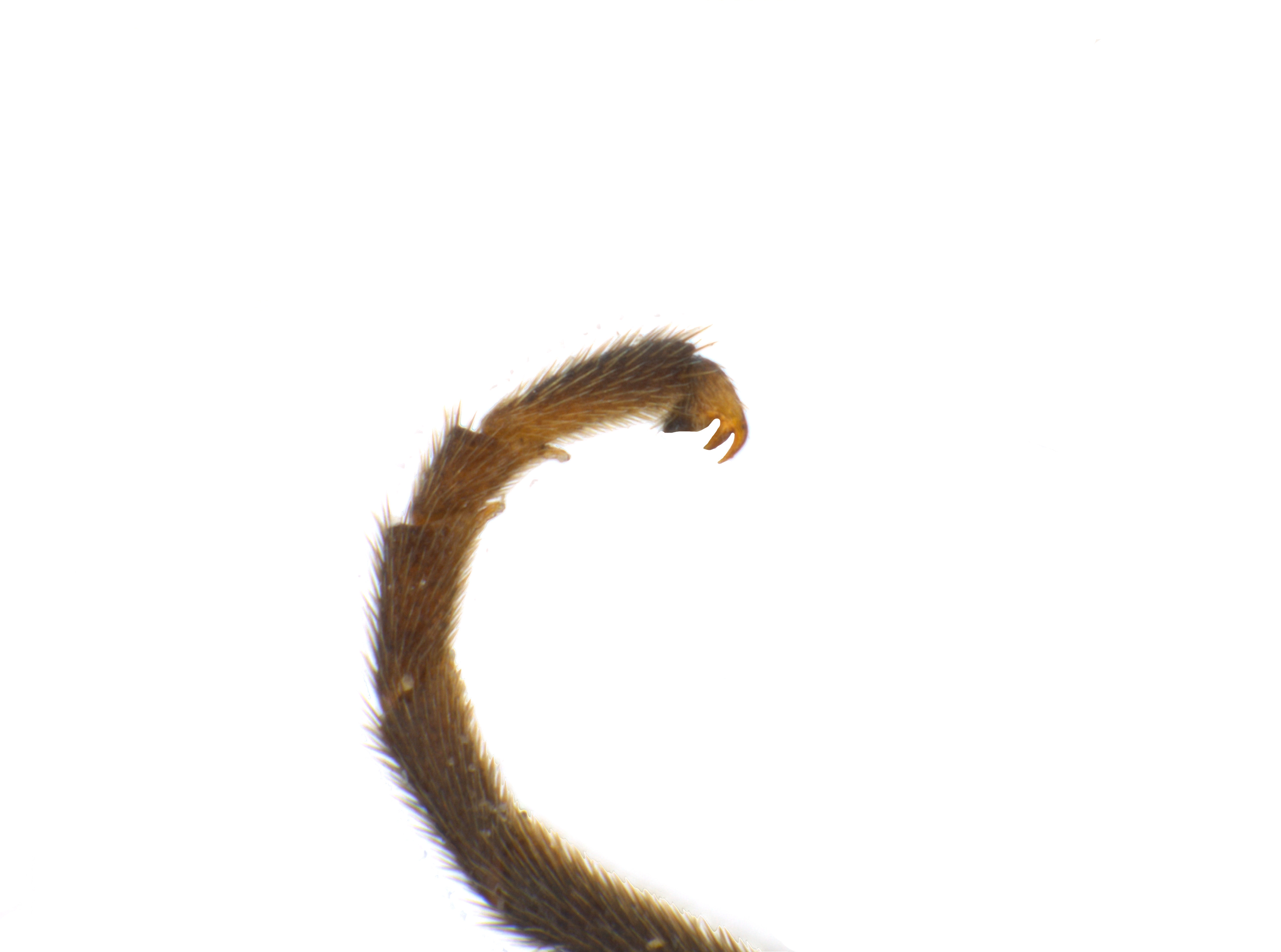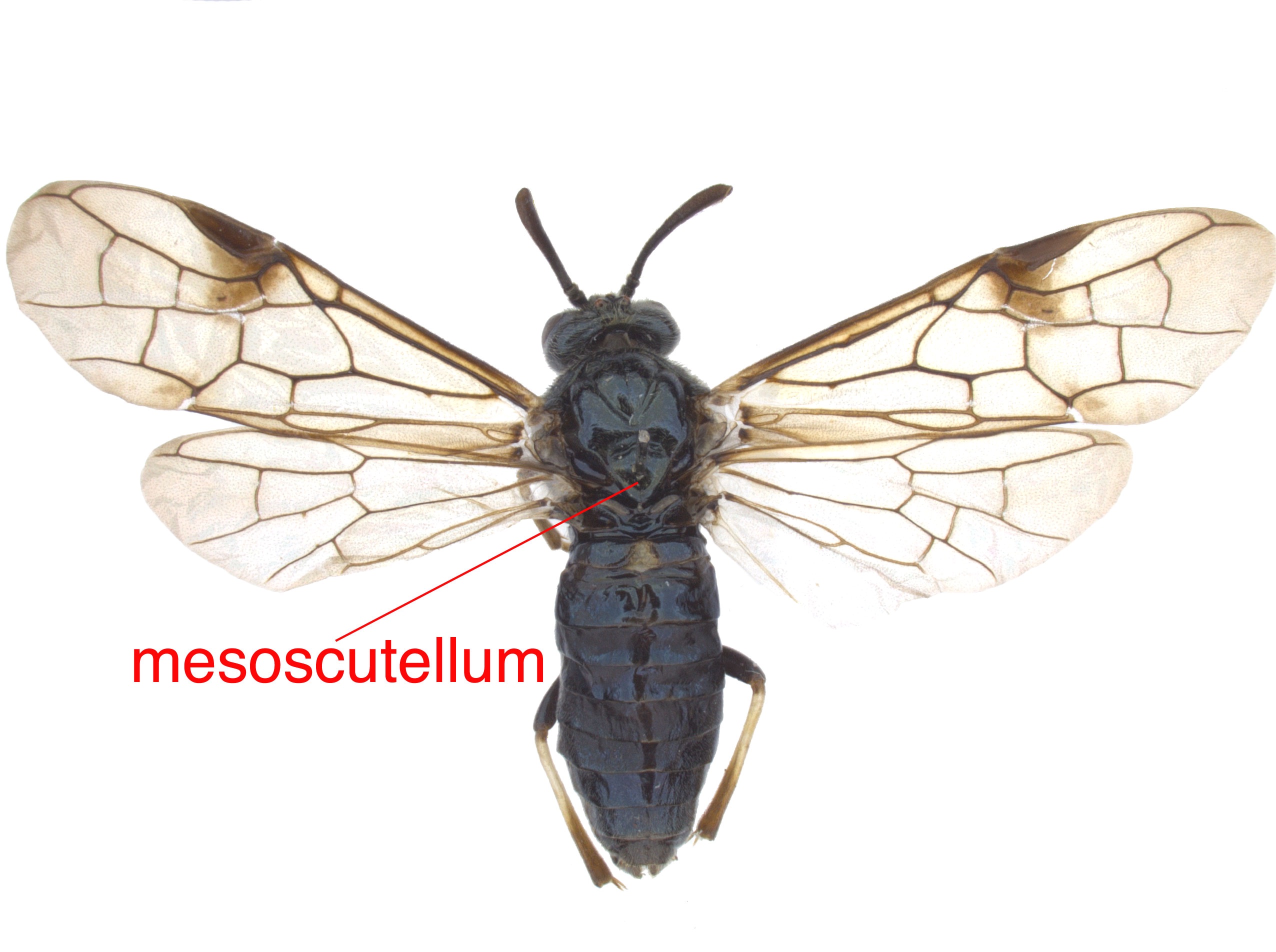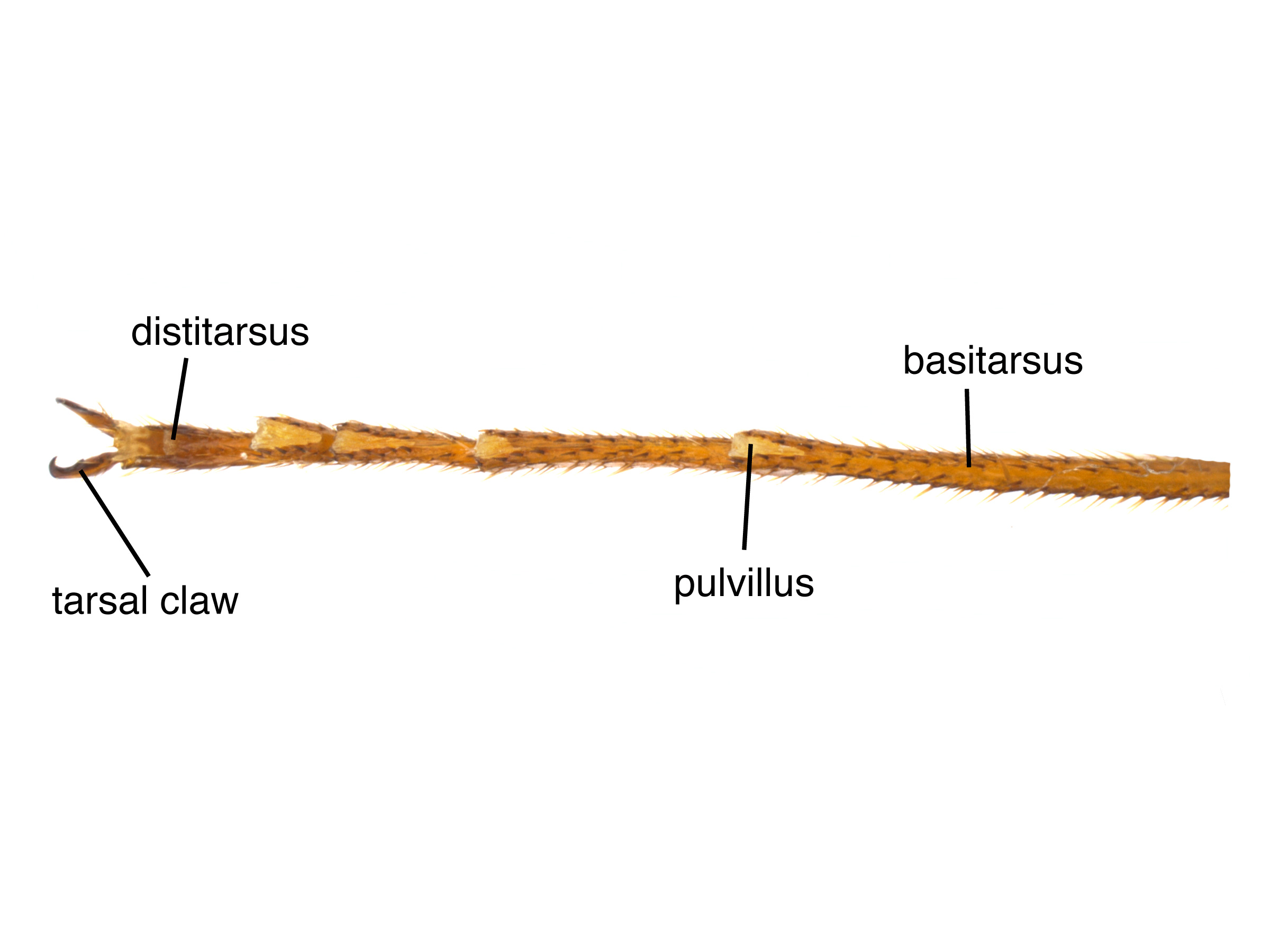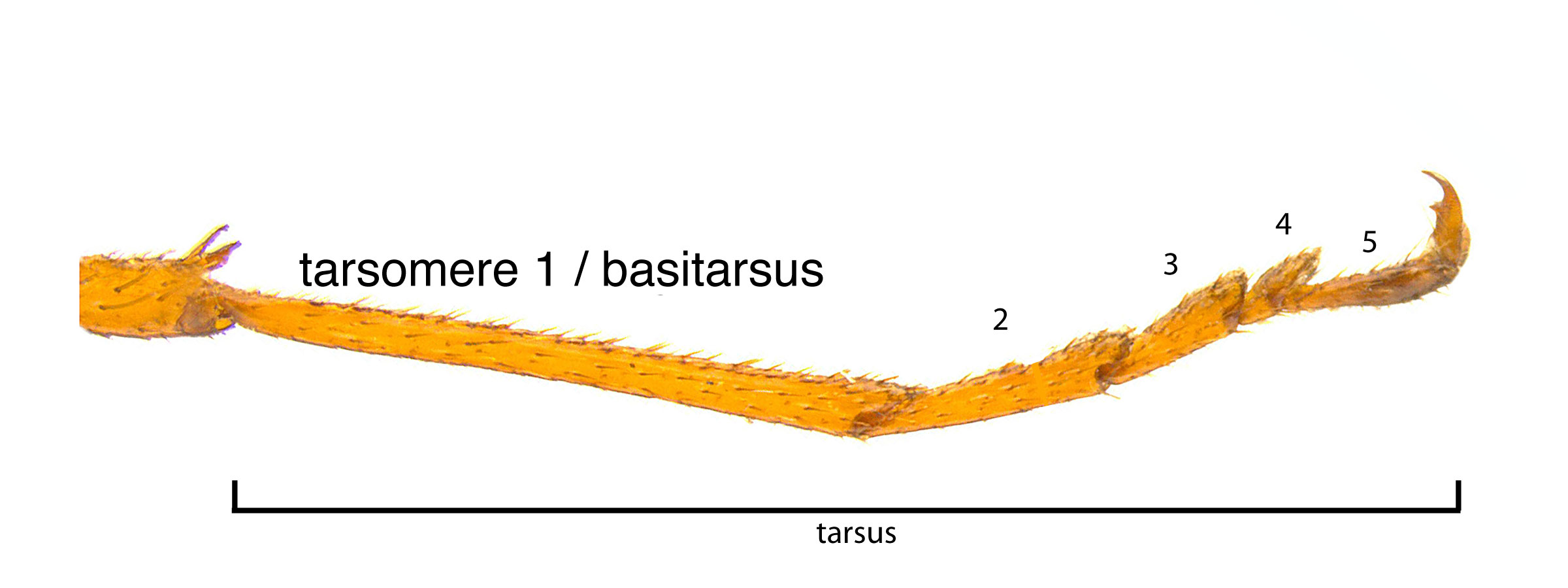Family: Tenthredinidae
Family common name: common sawflies
Subfamily: Blennocampinae
Tribe: Phymatocerini
Genus: Phymatocera Dahlbom, 1835
Subgenera: none
The Tenthredinidae are the most species-rich family and are found throughout the world, in all continents but Antarctica. They are known as the “common sawflies.” They can generally be recognized by a cylindrical body and long, segmented antennaeantenna:
the sensory organ emerging from the front of the head, usually between the compound eyes and above the clypeus; includes the flagellum, scape and pedicel
 . Otherwise, they come in a variety of colors, sizes, and forms (Goulet 1992Goulet 1992:
. Otherwise, they come in a variety of colors, sizes, and forms (Goulet 1992Goulet 1992:
Goulet H. 1992. The genera and subgenera of the sawflies of Canada and Alaska: Hymenoptera. Symphyta. The insects and arachnids of Canada. Part 20. Agriculture Canada Publication.).
Sawflies in the subfamily Blennocampinae have a diverse set of life histories and habits. Many species are restricted to subtropical and tropical regions, but the genus is still fairly species-rich in North America. Blennocampinae includes many sawflies that feed on ornamental and forestry crops. This subfamily can be recognized by wing venationvenation:
the network of veins on a wing
and bidentatebidentate:
having two teeth; often used in descrbing mandibles or tarsal claws
 mandibles (Smith 1969dSmith 1969d:
mandibles (Smith 1969dSmith 1969d:
Smith DR. 1969d. Nearctic Sawflies. I. Blennocampinae: Adults and larvae (Hymenoptera: Tenthredinidae). Technical Bulletin, U.S. Department of Agriculture 1397: 1-176.).
Phymatocera are medium-sized, about 6.5–8.5 mm in length, and almost entirely black with darkened wings (Smith 1969dSmith 1969d:
Smith DR. 1969d. Nearctic Sawflies. I. Blennocampinae: Adults and larvae (Hymenoptera: Tenthredinidae). Technical Bulletin, U.S. Department of Agriculture 1397: 1-176.).
There are 13 described extantextant:
in existence; opposite of extinct
species worldwide. Six species occur in North America (Taeger et al. 2010Taeger et al. 2010:
Taeger A, Blank SM, and Liston AD. 2010. World Catalog of Symphyta (Hymenoptera). Zootaxa 2580: 1-1064.).
A key to North American species is included in Goulet 1981bGoulet 1981b:
Goulet H. 1981b. Distinguishing external features of adult males and females of North American species of Phymatocera Dahlbom (Hymenoptera: Tenthredinidae) and their phylogeny. Canadian Entomologist 113: 801-806..
Subfamily characters
 veins Cu1 and 1m-cu between 120°–150° (Goulet 1992Goulet 1992:
veins Cu1 and 1m-cu between 120°–150° (Goulet 1992Goulet 1992: veins M and 1m-cu parallel (Smith 1969dSmith 1969d:
veins M and 1m-cu parallel (Smith 1969dSmith 1969d: veins 2A and 3A incomplete (Smith 1969dSmith 1969d:
veins 2A and 3A incomplete (Smith 1969dSmith 1969d:Genus characters
 veins 2A and 3A forked at apexapex:
veins 2A and 3A forked at apexapex: or mesepisternummesepisternum:
or mesepisternummesepisternum: (Goulet 1992Goulet 1992:
(Goulet 1992Goulet 1992: on first hind tarsomeretarsomere:
on first hind tarsomeretarsomere: less than a third of the length of the second hind tarsomeretarsomere:
less than a third of the length of the second hind tarsomeretarsomere: (Goulet 1992Goulet 1992:
(Goulet 1992Goulet 1992: basalbasal:
basalbasal: with long inner tooth (Goulet 1992Goulet 1992:
with long inner tooth (Goulet 1992Goulet 1992: (Goulet 1992Goulet 1992:
(Goulet 1992Goulet 1992: narrow medially; membranous area posterior to first tergitetergite:
narrow medially; membranous area posterior to first tergitetergite: large (Goulet 1992Goulet 1992:
large (Goulet 1992Goulet 1992:Phymatocera can be confused with similar species in the subfamily Blennocampinae. It can be distinguished from most other genera by the developed pulvillipulvillus:
soft pads used for surface adhesion, located in sawflies on the first 4 segments of the tarsus
 on basalbasal:
on basalbasal:
towards the base; closest to the body
tarsomeres, and the furcatefurcate:
divided into branches; forked
 stub of veins 2A and 3A of the fore wingfore wing:
stub of veins 2A and 3A of the fore wingfore wing:
the anterior wing of each pair of wings; usually the largest wing of the pair
 . Because of intra-species variation in external characters, Phymatocera and Paracharactus can only be positively distinguished by genitalia characteristics (Smith 1969dSmith 1969d:
. Because of intra-species variation in external characters, Phymatocera and Paracharactus can only be positively distinguished by genitalia characteristics (Smith 1969dSmith 1969d:
Smith DR. 1969d. Nearctic Sawflies. I. Blennocampinae: Adults and larvae (Hymenoptera: Tenthredinidae). Technical Bulletin, U.S. Department of Agriculture 1397: 1-176.).
none
In North America, Phymatocera feeds on Smilacina (false Solomon's seal) (Goulet 1992Goulet 1992:
Goulet H. 1992. The genera and subgenera of the sawflies of Canada and Alaska: Hymenoptera. Symphyta. The insects and arachnids of Canada. Part 20. Agriculture Canada Publication.).
The specific life histories for North American Phymatocera are not known.
The host plant of Phymatocera is toxic. There is evidence that feeding larvaelarva:
the immature stage of holometabolous insects
 may be able to sequester toxic compounds into their bodies as a defense, in a manner similar to closely related Rhadinoceraea. Larvaelarva:
may be able to sequester toxic compounds into their bodies as a defense, in a manner similar to closely related Rhadinoceraea. Larvaelarva:
the immature stage of holometabolous insects
 of P. aterrima, a European species, when approached by a predator show easy bleeding habits, which are often tied to toxic or distasteful hemolymphhemolymph:
of P. aterrima, a European species, when approached by a predator show easy bleeding habits, which are often tied to toxic or distasteful hemolymphhemolymph:
the "blood" of an insect, a fluid plasma containing nucleated cells
(Schaffner and Boevé 1996Schaffner and Boevé 1996:
Schaffner U and Boevé JL. 1996. Sequestration of plant alkaloids by the sawfly Rhadinoceraea nodicornis: ecological relevance for different life stages and occurrence among related species. Entomologia Experimentalis et Applicata 80: 283–285.).
World: This genus is known from North America, Europe, through Russia, and in China and Japan (Taeger et al. 2018Taeger et al. 2018:
Taeger A, Liston AD, Prous M, Groll EK, Gehroldt T, and Blank SM. 2018. ECatSymmdash;Electronic World Catalog of Symphyta (Insecta, Hymenoptera). Program version 5.0 (19 Dec 2018), data version 40 (23 Sep 2018). Senckenberg Deutsches Entomologisches Institut (SDEI), Muuml;ncheberg. https://sdei.de/ecatsym/ Accessed: 28 Jan 2020.).
North America: Phymatocera occurs throughout the United States and southern Canada, with the most northern records in British Columbia (Smith 1969dSmith 1969d:
Smith DR. 1969d. Nearctic Sawflies. I. Blennocampinae: Adults and larvae (Hymenoptera: Tenthredinidae). Technical Bulletin, U.S. Department of Agriculture 1397: 1-176.).
Map data from: GBIF.org (29 October 2019) GBIF Occurrence Download Phymatatocera
Details about data used for maps can be found here.